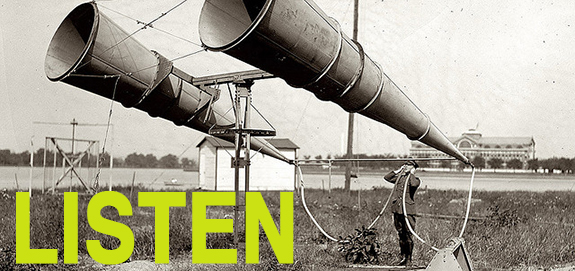How to Handle Sales Objections
- Home
- Sales Objections
- Handle Objections
How to handle sales objections, there are many ways.
I cover many possibilities in my book which you can get by clicking the button over to your right. (maybe Below on a mobile phone).
But please understand the only way how to handle sales objections is to follow the boy scout motto and “be prepared”
And, when in front of your prospect listen attentively and demonstrate that you truly understand their concerns. The best way to be able to focus on what the prospect is saying and feeling is to be confident in your responses which comes from being practiced.
I wrote about my ideas in Overcoming Sales Objections but given that all of us know more than one of us I have summarised the wisdom from a number of authority sites below.
Below are some specific tips on how to handle sales objections and please also remember the list of “Things not to do”.
1. Be Grateful for Objections
What! Seriously?
Yes, really. Think of the alternative.
If the prospect doesn’t voice an objection you have nowhere to go. You just become confused as to why they are not buying. If they just politely say to come back latter it just wastes your time.
However, if they give you an objection you have the chance to continue the conversation. So, ask them about all of their concerns and objections right up front.
2. Listen Fully

I mentioned this in my webpage Overcoming Sales Objections but it warrants repeating.
Your first reaction when you hear an objection may be to jump right in and respond immediately. Resist that temptation. When you react too quickly, you risk making assumptions about the objection.
Don't interrupt.
Listen patiently and intently without bias or anticipation. Interrupting a prospect will intensify the objection and cause prospects to become preoccupied with it.
Your body language and verbal confirmations should communicate to the buyer that you are listening intently.
State their objection back to them: "So what I'm hearing you say is this," and repeat back the customer's objection. This shows you are listening and sometimes a prospect will change their objection when they hear their owns word reflected back to them.
3. Empathise with them
Empathy builds rapport and shows you care.
Remember what Zig Ziglar said, “They dont care how much you know until they know how much you care”
Don’t shoot yourself in the foot by getting defensive.
You might say, “I’ve heard that before, I appreciate this is probably frustrating for you and I think I just may be able to help.”
Responding like this you are more likely to get them to open up and share more.
It can also help for you to be curious.
New Courses
I have launched 3 Video Courses on Sales Objections
The courses will be housed on the Udemy learning platform and you'll need to provide your name and email to Udemy to access the course.
The first video course is on improving your attitude to sales objections.
Free access has now ended but you can buy ..
Just click on this link

The second video course covers skills and tactics to handle sales objections.
Free access has now ended but you can buy ..

The third video course introduces my Ultimate System for Dealing with Sales Objections

4. Understand the Objection Completely
Many objections hide underlying issues that the buyer can't or isn't ready to talk about or doesn’t even realise. Often the true issue isn't what the buyer first tells you. It's your job to get to the heart of the objection, and then fully understand it and its true source.
Ask permission from the buyer to understand and explore the issue. ..
You might say, “Interesting, I’ve never heard that comment before, do you mind if I ask a few questions so that I can really understand your situation?”
Once explored you should restate the objection.
Sometimes when you restate the objection, the buyer sees things differently, and the objections may just disappear or you get closer to the true source of the objection.
Even after the buyer confirms you understand perfectly, ask "What else?" and "Why" questions for clarification. Often it is the answer to that last "What else?" that contains the biggest barrier to moving the sale forward.
It’s all about keeping them talking.
Remember that objections are really opportunities for conversations!
To that end asking open-ended questions is usually better.
So, don’t ask questions that get you a “yes’ or “no” answer.
If you get stuck, just do what every 4 year old does and ask “why?” -- you’ll be amazed at how powerful that little question can be!
Probe as deeply as you can. If at any time you don’t understand something, ask them to clarify. Don’t let any word slip by that you can’t define especially company or industry specific terms.[see article on my site about nominalisation].
Don’t be afraid to ask a lot of questions, keep your curiosity at a high level.
5. Explain How Your Solution Helped Others

Some customers are very interested in examples of how your offer has helped others in a similar situation.
But, it would be a mistake to just launch into examples of successful users of your product or service.
Even more of an issue if you introduce those example with a “yes … but”.
Far better to use the Agreement Frame or the "feel, felt, found" technique.
You first have to indicate that you agree their objection makes sense before you give them an example of a client with a similar concern and explain how your solution solved that problem.
6. Try to resolve their objection there and then
The better you can satisfy their concerns right away, the more likely they are to proceed further in the sales process.
However, as I mentioned in my webpage on “what not to do” [link] never wing it [change these words to match my site]
7. Analyse their Objection

I think internally you have to ask yourself, "Is their objection valid?"
If you truly believe their objection is invalid or illogical, then you need to get them to see that by asking the right questions. The last thing a customer wants is to be told they are wrong.
9. Keep responses clear and to the point
A long response where you go on and on isn’t likely to be well-received, but instead, seen as more ‘selling’ and less like addressing their concerns.
10. Respond in the Correct Order
After you're confident you've uncovered all objections, address the most important objection first.
Once you work through the greatest barrier to moving forward, other concerns may no longer matter or feel as important to the buyer.
11. Ask, Don’t Tell

I've written this before but selling is not about telling.
Use any objection to better understand the needs of the prospect.
It’s not about trying to minimise the objection. Ask as many questions as you have to in order to understand their concern. You should be calm, upbeat and inquisitive.
Once you understand the root of the problem, then deal with it.
12. Start With The End
Like Stephe Covey writes in his book "7 Habits for Highly Effective People" ... start with the end in mind. Except this time it needs to be in their mind.
“Begin every customer resolution with one simple question,
"What is your desired outcome?"
The answer sets the tone for resolving the situation expeditiously while working within the realm of what's possible in the scope of the business. It can be surprising how fair-minded and thoughtful customers can be while taking their own personal interests and the business' interests into consideration.”
13. Be Honest About Your Product

No product or service is a 100% fit for the customer. Be upfront and honest about what your product can and cannot do. Back it up with customer stories. Honesty builds credibility
14. Show Them The Value
It's easy to let an objection disorient and confuse. Use questions that invite the person to reorient to what's really important; to the major benefits of your product and what is important in their specific situation.
They need see value in your product or service.
When you uncover a pain, your next step should be to quantify what that pain is costing the business and expand it's relevance. [see SPIN Selling]
If the customer continues to object then you’re not asking the right questions or your not phrasing your questions so that it’s easy for them to understand. [Link to Responsive Customers ?]
Remember the 2nd half of the SPIN Model … Implications and Needs Pay Offs.
15. Bring on Your Witnesses
Customer references are a great tool because they represent social proof [see Cialdini].
Over time, your stories will set you apart from others and give your customers another reason to trust you with their business.
Share stories about other customers who had similar objections during the sales process, but ultimately moved forward with your offering and saw business success as a result.
16. Educate Your Prospects

So often, we end up trying to prove our customers wrong when we should really see it as an opportunity to educate them on how their situation could be improved.
Remember to use questions to guide their understanding not to force your superior knowledge on them like an arrogant teacher.
17. Confirm You've Satisfied the Objection
Once you've responded to the buyer's objections, check if you've covered all of their concerns. Just because they nodded during your response doesn't mean they agreed with everything you said. Explain your solution further if necessary.
Don’t force if the client is not ready to commitment.
“Be sure not to accept a lukewarm "yes" for an answer though, either. Many buyers will accept a solution in the moment, but once you're out of sight or off the phone, the objection still remains.”
Ask your potential buyer how they feel about your solution.
18. Create an objection response cheatsheet
This document should list the top 25 objections you face, along with a 1-3 sentence response for each. If you work with a team, collaborate on this project together.”
This comes from ...
Personally, I find this approach difficult.
Too much to remember.
Better to learn a system to deal with objections like SOM or similar.
19. Practice the objection responses, commit them to memory
“You don’t have to recite them word-for-word, but you should at least have them in the back of your mind so you have a strong foundation and can deliver con[dent, compelling responses every time.”
Once again I differ to this approach.
If you practice a method of responding to ANY objection you’ll never be floored when you get an unusual objection where your rote learned responses don’t fit.
[ See #18 above SOM]
The best way to become a master of these strategies is to practice them while selling but you need to be prepared first.

20. Prepare For Every Kind Of Conversation
If you follow the SOM process I recommend above you will be prepared to handle ANY objection.
For another viewpoint on how to handle objections see this objection_process
Return to the Sales Objections Menu Page
- Home ›
- Sales Objections ›
- How to Handle Sales Objections
You might like these
- Home
- Sales Objections
- Handle Objections